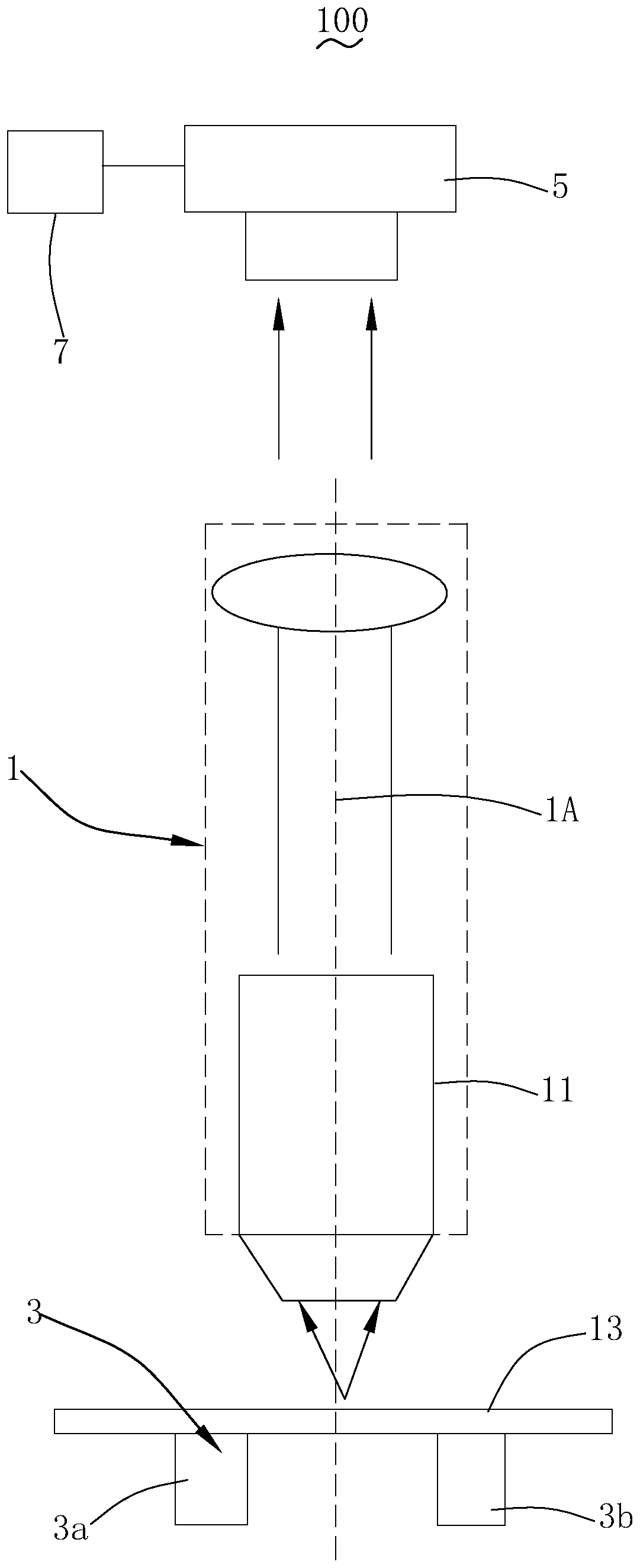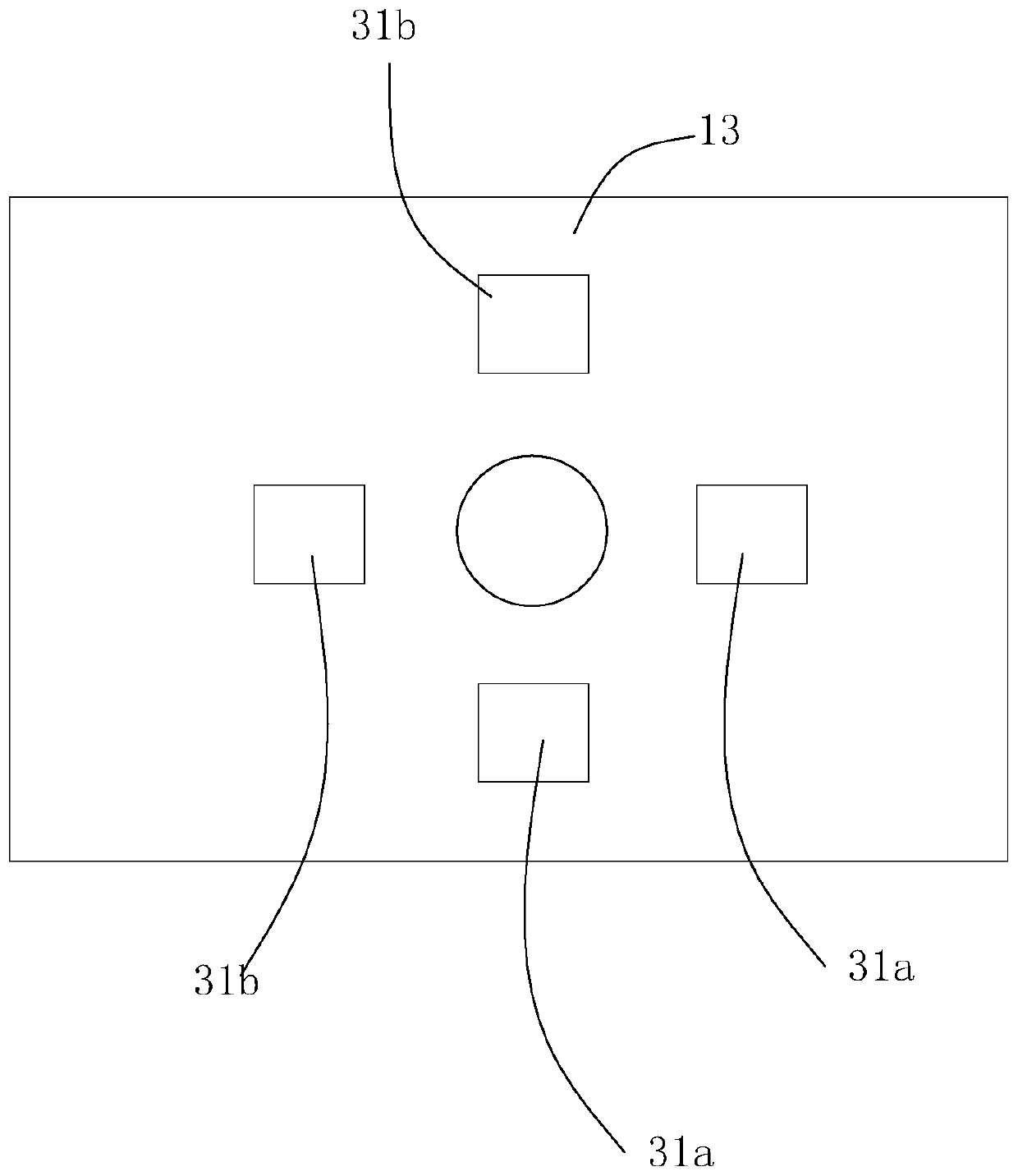Phase difference microscopic imaging system and imaging method thereof
A microscopic imaging and microscope technology, applied in microscopes, instruments, measuring devices, etc., can solve problems such as high cost and complex structure, and achieve the effect of simple and easy-to-operate imaging methods.
- Summary
- Abstract
- Description
- Claims
- Application Information
AI Technical Summary
Problems solved by technology
Method used
Image
Examples
Embodiment 1
[0037] Please refer to figure 1 with figure 2 , the phase contrast microscopy imaging system 100 includes a microscope 1 with an optical axis 1A, a light source array 3 , an image acquisition module 5 and a computing module 7 .
[0038] The microscope 1 includes an objective lens 11 and a slide glass 13 . A sample (not shown in the figure) is set on the slide glass 13 and located within the field of view of the objective lens 11 .
[0039] The light source array 3 is arranged on the side of the slide glass 13 away from the objective lens 11, and is used to emit a first light beam and a second light beam that are axisymmetrically arranged with respect to the optical axis 1A (that is, the first light beam and the second light beam take the optical axis 1A as the axis of symmetry). Axisymmetric arrangement), the first light beam and the second light beam pass through the sample and enter the microscope 1 from the objective lens 11. Wherein, the first light beam and the second...
Embodiment 2
[0066] The difference between the phase contrast microscopic imaging system of the second embodiment and the phase contrast microscopic imaging system of the first embodiment is that the image acquisition module 5 is a color camera. When the light source array 3 emits the first light beam, the image acquisition module 5 (color camera) takes an image (i.e. the first image) corresponding to the first light beam; when the light source array 3 emits the second light beam, the image acquisition module 5 (color camera) ) corresponding to the second light beam to take an image (ie, the second image). Wherein, the color camera can adopt a CCD camera or a CMOS camera. The photosensitive spectrum of the color camera covers the light emitting spectrum of the first light beam and the second light beam.
[0067] For a color camera, each pixel records 3 values of the three color channels of R, G, and B. In this embodiment, the grayscale value I of the image and the R, G, and B values ...
Embodiment 3
[0076] The difference between the phase-contrast microscopic imaging system of Embodiment 3 and the phase-contrast microscopic imaging system of Embodiment 1 lies in that the spectra of the first light beam and the second light beam do not overlap. When the light source array 3 emits the first light beam, the image acquisition module 5 (monochrome camera) takes an image (i.e. the first image) corresponding to the first light beam; when the light source array 3 emits the second light beam, the image acquisition module 5 (monochrome camera) color camera) corresponding to the second light beam to take an image (that is, the second image). The photosensitive spectrum of the monochromatic camera covers the luminescent light source spectrum of the first light beam and the second light beam.
[0077] Specifically, the first light beam and the second light beam can be monochromatic light beams of different wavelengths, wherein the monochromatic light is preferably selected from the th...
PUM
 Login to View More
Login to View More Abstract
Description
Claims
Application Information
 Login to View More
Login to View More - R&D
- Intellectual Property
- Life Sciences
- Materials
- Tech Scout
- Unparalleled Data Quality
- Higher Quality Content
- 60% Fewer Hallucinations
Browse by: Latest US Patents, China's latest patents, Technical Efficacy Thesaurus, Application Domain, Technology Topic, Popular Technical Reports.
© 2025 PatSnap. All rights reserved.Legal|Privacy policy|Modern Slavery Act Transparency Statement|Sitemap|About US| Contact US: help@patsnap.com



